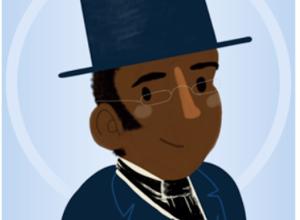World’s Finest Comic Book Preservation Project Heads to Auction

Dallas, TX – There has never been anything like The Q-Collection Comic Book Preservation Project. And it’s reasonably safe to say there will never be anything like it ever again.
This is not the hyperbole of a media release. It is just bald-faced fact.
Never again is someone likely to spend almost two decades chasing down low-grade, beat-up copies of The Most Important Comic Books Ever Published. Then slice apart each valuable issue, page by page. Then laminate each one of those pages in specially made UV-resistant Mylar. Then reconstruct each disassembled issue in special binders stored in custom-made aluminum-and-resin cases so that readers can safely flip through these storied comic books for hundreds, if not thousands, of years.
“I’m a member of Mensa and a PhD,” says the collection’s creator and caretaker, John Sindall, who also spent five years in U.S. Air Force Intelligence and served for years as a Harvard University academic advisor. “And any time I am told you can’t do something, I’ve got to do it.”
The Q-Collection Comic Book Preservation Project, a centerpiece of Heritage Auctions’ Comics & Comic Art event taking place Sept. 10-13, consists of some 250 Golden and Silver Age comics spread across 72 sleeved binders. Therein you will find laminated copies of a library’s worth of key titles published since from the 1930s through the ’60s.
Contained in these binders are dozens of No. 1’s, among them Captain America, Batman, The Avengers, Green Lantern, X-Men, Fantastic Four. Hundreds of first appearances, including those of Captain Marvel, Iron Man, the Justice Society of America, the Martian Manhunter. Countless origin stories. And some of the most significant titles published, including 1947’s All-Negro Comics No. 1, whose creator Orrin Cromwell Evans hired only Black writers and artists.
Some of the titles aren’t entirely comprised of original pages; if some copies were incomplete, Sindall filled in the blanks with reproduced pages. The end result is an A-to-Z history lesson, from Action to Zip. There’s Superman No. 1, one of the most famous titles of all time, and Crime SuspenStories No. 22, easily one of the most infamous. The Q-Collection jumps from 1936’s The Comics Magazine No. 1, which contained the first appearance of Superman creators Jerry Siegel and Joe Shuster's Dr. Mystic, to 1972’s All-Star Western No. 10, which marked the debut of Jonah Hex.
And there’s almost everything in between, with each comic presented, as close as possible, as it was meant to be read – from cover to cover, ads and all. Better still, these surviving pieces are now so well protected they can be read by anyone anywhere – in a shower, even – without risk of damage.
“This is an awesome opportunity to own a gigantic collection of some of the most sought-after comic books in the world,” says Jeremy Shorr, owner of Dallas’ award-winning Titan Comics shop. “The fact that they're totally readable only makes this collection that much more desirable, in my opinion. This collection should be the centerpiece of a museum's collection.”
Which is precisely where Sindall hopes this collection one day lands, now that he has taken it to market for the very first time. “Or,” he says, “an individual who will eventually pass it along to a library or museum.”
The Q-Collection began taking shape in 2001, when Sindall acquired a crumbling copy of 1939’s New York World’s Fair Comics. Sindall says a comics restorationist told him the copy could not be saved – or ever read again. The pulp was turning to dust, and Sindall was told to stash the historic comic and forget all about it. Instead, Sindall set about to find a way to protect and preserve these comics, lest they all crumble apart and wind up swept into history’s ashbin.
At that point Sindall began selling and trading his slabbed, graded Golden Age comics to acquire key pieces for what became The Q-Collection. For a crumbling copy of Superman No. 1, Sindall says, he traded away 22 slabbed copies of Golden Age firsts; for Batman No. 1, he parted with 16 slabbed No. 1’s dating back to comicdom’s earliest days.
Spread throughout the binders, too, are 460 “bonus” items tied to comic history, from trading cards to fan-club membership certificates to advertisements. There are even original covers and single pages from some of comic collecting’s harder-to-find titles.
“It’s overwhelming, because it’s such an unusual idea in the comic hobby to take these books and cut them apart and laminate them,” says Aaron White, Heritage Auctions’ Comics Consignment Director. “That’s not something you would even imagine doing as a comics collector. But as John likes to say, your great-great-great-great-grandkids could read a Superman No. 1, and that’s compelling. That’s an outside-of-the-box way to think about it. And we could always use more of that.”
To complete this collection, this labor of love, Sindall assembled a 26-member advisory committee; some members told him what to collect, while others helped him track down copies of rarities thought lost or inaccessible. That panel included no less than legendary science-fiction writer Harlan Ellison, Marvel Comics’ head of U.K. operations Dez Skinn (often called “the British Stan Lee”) and Trina Robbins, the first woman to draw Wonder Woman comics.
“We created a reading collection, not something stuck inside a slab,” Sindall says. “If you want to read Wonder Woman No. 1, you can do it page by page. I did this so other people can read these comics and enjoy them, as we did when we were kids. I didn’t do this selfishly. I did this only so these comics could be enjoyed 100 or 1,000 years from now.”















